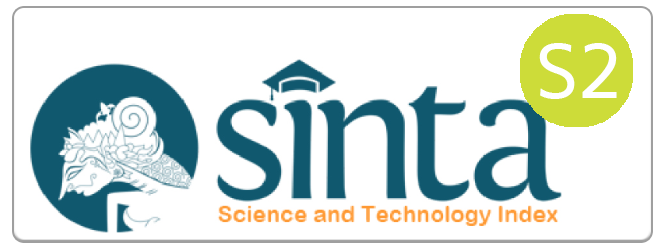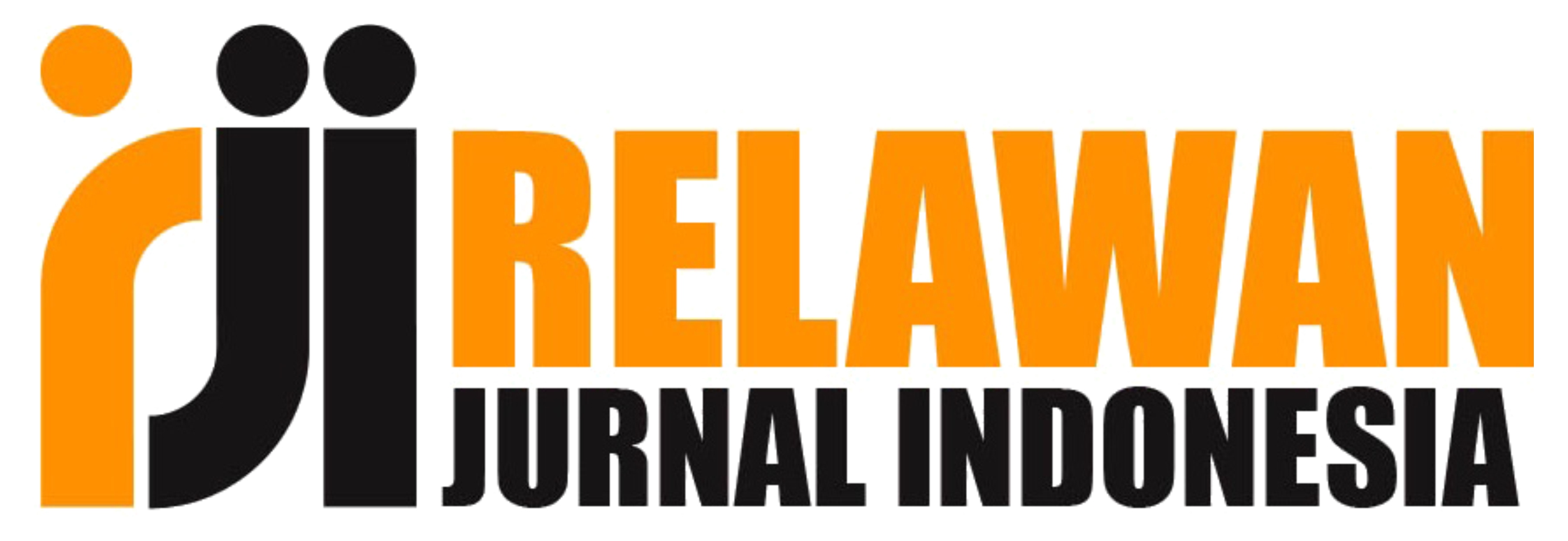Influence of Intellectual Capital on Operational Performance through Innovation Capability in Indonesia’s Defence Industry
Abstract
This research examines the impact of intellectual capital on operational performance through innovation capabilities in the defence industry in Indonesia, PT. Pindad (Persero). Network processes within the company are assessed by internal performance, which is described by the company's operational performance. 142 employees who work in the production function were sampled in this research using the probability-sampling method with a stratified random sampling type. SEM-PLS was used as a data analysis model. Human capital, structural capital and social capital are three components used in the research. This study provides empirical evidence that these three components influence operational performance. In addition, it is known that human capital, structural capital, and social capital affect innovation capability, and the company's operational performance is influenced by innovation capability. In an indirect relationship, the results interpret that the influence of human capital, structural capital and social capital on the company's operational performance can be through innovation capability. This research provides input to the defence industry to improve performance by increasing the intellectual capital owned by the company without ignoring the importance of innovation capability.
Keywords
Full Text:
PDFReferences
Abualoush, S., Masa’deh, R., Bataineh, K., & Alrowwad, A. (2018). The role of knowledge management process and intellectual capital as intermediary variables between knowledge management infrastructure and organization performance. Interdisciplinary Journal of Information, Knowledge, and Management, 13, 279–309. https://doi.org/10.28945/4088
Agyapong, F. O., Agyapong, A., & Poku, K. (2017). Nexus between social capital and performance of micro and small firms in an emerging economy: The mediating role of innovation. Cogent Business and Management, 4(1), 1–20. https://doi.org/10.1080/23311975.2017.1309784
Alrowwad, A., Abualoush, S. H., & Masa’deh, R. (2020). Innovation and intellectual capital as intermediary variables among transformational leadership, transactional leadership, and organizational performance. Journal of Management Development, 39(2), 196–222. https://doi.org/10.1108/JMD-02-2019-0062
Armstrong, M. (2006). Strategic Human Resource Management; A Guide to Action (Third). Thomson-Shore, Inc.
Avkiran, N. K., & Ringle, C. M. (2018). Partial Least Squares Structural Equation Modeling: Recent Advances in Banking and Finance. In Springer. http://www.springernature.com/series/6161
Dabić, M., Stojčić, N., Simić, M., Potocan, V., Slavković, M., & Nedelko, Z. (2021). Intellectual agility and innovation in micro and small businesses: The mediating role of entrepreneurial leadership. Journal of Business Research, 123(October 2020), 683–695. https://doi.org/10.1016/j.jbusres.2020.10.013
De Toni, A. F. (2016). International Operations Management; Lessons in Global Business. Rouledge.
Dhar, B. K., Mutalib, M. A., & Sobhani, F. (2020). Effect of Innovation Capability on Human Capital and Organizational Performance Effect of Innovation Capability on Human Capital and Organizational Performance. 29(April), 7074–7087.
Edvisson, L., & Malone, M. S. (1997). Intellectectual Capital Realizing Your Company’s True Value by Finding Its Hidden Brainpower. HerperCollins.
Fajri, D. A., & Aziz, A. L. (2020). the Effect of Intellectual Capital on Corporate Value. Advance in Economics, Business and Management Research, 154(AICoBPA 2019), 17. https://doi.org/10.18860/mec-j.v1i2.4825
Ganguly, A., Talukdar, A., & Chatterjee, D. (2019). Evaluating the role of social capital, tacit knowledge sharing, knowledge quality and reciprocity in determining innovation capability of an organization. In Journal of Knowledge Management (Vol. 23, Issue 6). https://doi.org/10.1108/JKM-03-2018-0190
Gebremichael, H. S. (2020). Human Capital and Process Innovation Capability for Competitive Advantage : A Study on Manufacturing SMEs in Tigray. Branna Journal of Engineering and Technology (BJET), 2(1), 78–94.
Gopalakrishnan, S., & Damanpour, F. (2001). The Dynamics of the Adoption of Product and Process Innovations in Organizations. Journal of Management Studies, 38(1), 0022–2380.
Gunday, G., Ulusoy, G., Kilic, K., & Alpkan, L. (2011). Effects of innovation types on firm performance. International Journal of Production Economics, 133(2), 662–676. https://doi.org/10.1016/j.ijpe.2011.05.014
Gupta, K., & Raman, T. V. (2020). Intellectual capital: a determinant of firms’ operational efficiency. South Asian Journal of Business Studies, 10(1), 49–69. https://doi.org/10.1108/SAJBS-11-2019-0207
Hair, J. F. (2014). A Primer on Partial Least Squares Structural Equation Modeling. In Long Range Planning (Vol. 46, Issues 1–2). https://doi.org/10.1016/j.lrp.2013.01.002
Hamad, A. A., Tuzlukaya, Ş., & Kırkbeşoğlu, E. (2019). the Effect of Social Capital on Operational Performance: Research in Banking Sector in Erbil. Copernican Journal of Finance & Accounting, 8(1), 101. https://doi.org/10.12775/cjfa.2019.004
Harris, L. (2014). Chapter 3 Theory of Intellectual Capital. 22–37.
Isa, M. K. N. B. J. A. N. bin S. A. H. M. (2015). Intellectual capital in Pakistani small medum enterprises. Journal of Intellectual Capital, 16(1).
Kafetzopoulos, D., & Psomas, E. (2015). The impact of innovation capability on the performance of manufacturing companies the Greek case. Journal of Manufacturing Technology Management, 26(1), 104–130. https://doi.org/10.1108/JMTM-12-2012-0117
Karim, S. (2014). Membangun Kemandirian Industri Pertahanan Indonesia. KPG (Kepustakaan Populer Gramedia).
Khalique, M., Bontis, N., Bin Shaari, J. A. N., Yaacob, M. R., & Ngah, R. (2018). Intellectual capital and organisational performance in Malaysian knowledge-intensive SMEs. International Journal of Learning and Intellectual Capital, 15(1), 20–36. https://doi.org/10.1504/IJLIC.2018.088345
Khalique, M., & De Pablos, P. O. (2015). Intellectual capital and performance of electrical and electronics SMEs in Malaysia. International Journal of Learning and Intellectual Capital, 12(3), 251–269. https://doi.org/10.1504/IJLIC.2015.070166
Khalique, M., & Shaari, J. A. N. bin. (2013). The road to the development of intellectual capital theory Muhammad Khalique * and. International Journal of Learning and Intellectual Capital, 10(2), 122–136.
Le, P. B., & Lei, H. (2019). Determinants of innovation capability: the roles of transformational leadership, knowledge sharing and perceived organizational support. Journal of Knowledge Management, 23(3), 527–547. https://doi.org/10.1108/JKM-09-2018-0568
Liu, C. H. (2017). The relationships among intellectual capital, social capital, and performance - The moderating role of business ties and environmental uncertainty. Tourism Management, 61, 553–561. https://doi.org/10.1016/j.tourman.2017.03.017
Liu, C. H., Chang, A. Y. P., & Fang, Y. P. (2020). Network activities as critical sources of creating capability and competitive advantage: The mediating role of innovation capability and human capital. Management Decision, 58(3), 544–568. https://doi.org/10.1108/MD-08-2017-0733
Mazzucchelli, A., Chierici, R., Tortora, D., & Fontana, S. (2021). Innovation capability in geographically dispersed R&D teams: The role of social capital and IT support. Journal of Business Research, 128(May), 742–751. https://doi.org/10.1016/j.jbusres.2019.05.034
Mendoza-Silva, A. (2021). Innovation capability: A sociometric approach. Social Networks, 64, 72–82. https://doi.org/10.1016/j.socnet.2020.08.004
Mondy, R. W., & Martocchio, J. J. (2016). Human Resource Management, Global Edition. In IOSR Journal of Business and Management Ver. I. http://80.82.78.13/get.php?md5=1e50ce6ce17857b2fc907fce76c60f57&key=D0JLX65VTU0MIMFO&mirr=1
Nahapiet, J., & Ghoshal, S. (1997). Social Capital, Intellectual Capital and the Creation of Value in Firms. Academy of Management Proceedings, 1997(1), 35–39. https://doi.org/10.5465/ambpp.1997.4980592
Nazarpoori, A. H. (2017). Survey the effects of intellectual capital and absorptive capacity on innovation capability (case study of Saipa company in Tehran). International Journal of Innovation Management, 21(3), 1–19. https://doi.org/10.1142/S1363919617500293
Oppong, G. K., Pattanayak, J. K., & Irfan, M. (2019). Impact of intellectual capital on productivity of insurance companies in Ghana: A panel data analysis with System GMM estimation. Journal of Intellectual Capital, 20(6), 763–783. https://doi.org/10.1108/JIC-12-2018-0220
Paananen, M. (2009). Exploring the relationships between knowledge sources in the innovation process: Evidence from finnish innovators. Technology Analysis and Strategic Management, 21(6), 711–725. https://doi.org/10.1080/09537320903052707
Panday, P. (2015). Research methodology: Tools and Techniques. In SpringerBriefs in Applied Sciences and Technology (Issue 9783319068282). Bridge Center. https://doi.org/10.1007/978-3-319-06829-9_3
Putra, I. G. C., Sunarsih, N. M., Novitasari, L. G., & Setini, M. (2020). Exploring the relationship between social capital, innovation capability and innovation during the coronavirus pandemic. Uncertain Supply Chain Management, 8(4), 857–864. https://doi.org/10.5267/j.uscm.2020.5.007
Radjenović, T., & Krstić, B. (2017). Intellectual Capital As the Source of Competitive Advantage: the Resource-Based View. Facta Universitatis, Series: Economics and Organization, 14, 127. https://doi.org/10.22190/fueo1702127r
Roos, G., Pike, S., & Fernstorm, L. (2005). Managing Intellectual Capital in Practice. Elsevier.
Ruiz-Jiménez, J. M., & Fuentes-Fuentes, M. D. M. (2013). Knowledge combination, innovation, organizational performance in technology firms. Industrial Management and Data Systems, 113(4), 523–540. https://doi.org/10.1108/02635571311322775
Sahoo, S. (2019). Quality management, innovation capability and firm performance: Empirical insights from Indian manufacturing SMEs. TQM Journal, 31(6), 1003–1027. https://doi.org/10.1108/TQM-04-2019-0092
Saunila, M. (2014). Innovation capability for SME success: perspectives of financial and operational performance. Journal of Advances in Management Research, 11(2), 163–175. https://doi.org/10.1108/JAMR-11-2013-0063
Saunila, M., Pekkola, S., & Ukko, J. (2014). The relationship between innovation capability and performance: The moderating effect of measurement. International Journal of Productivity and Performance Management, 63(2), 234–249. https://doi.org/10.1108/IJPPM-04-2013-0065
Saunila, M., & Ukko, J. (2012). A conceptual framework for the measurement of innovation capability and its effects. Baltic Journal of Management, 7(4), 355–375. https://doi.org/10.1108/17465261211272139
Seemann, P., & Stucky, S. (2015). Building Intangible Assets : A Strategic Framework for Investing in Intellectual Capital. March.
Sharma, S., & Modgil, S. (2019). TQM, SCM and operational performance: an empirical study of Indian pharmaceutical industry. Business Process Management Journal, 26(1), 331–370. https://doi.org/10.1108/BPMJ-01-2018-0005
Shih, K. H., Liu, Y. T., Jones, C., & Lin, B. (2010). The indicators of human capital for financial institutions. Expert Systems with Applications, 37(2), 1503–1509. https://doi.org/10.1016/j.eswa.2009.06.042
Siahaan, D. T., & Tan, C. S. L. (2020). Antecedents of innovation capability and firm performance of indonesian ict smes. Asian Journal of Business Research, 10(2), 45–71. https://doi.org/10.14707/ajbr.200083
Sivalogathasan, V., & Wu, X. (2015). Impact of organization motivation on intellectual capital and innovation capability of the textile and apparel industry in Sri Lanka. International Journal of Innovation Science, 7(2), 153–166. https://doi.org/10.1260/1757-2223.7.2.153
Slack, N., & Brandon-Jones, A. (2018). Operations and Process Management; Principles and Practice for Strategic Impact (Fifth). Pearson Education Limited.
Stewart, T. A. (1998). Intellectual Capital The New Wealth of Organizations; Modal Intelektual Kekayaan Baru Organisasi. PT. Elex Media Komputindo.
Torre, C., Tommasetti, A., & Maione, G. (2020). Technology usage, intellectual capital, firm performance and employee satisfaction: the accountants’ idea. TQM Journal. https://doi.org/10.1108/TQM-04-2020-0070
Wang, Z., Cai, S., Liang, H., Wang, N., & Xiang, E. (2018). Intellectual capital and firm performance: the mediating role of innovation speed and quality. International Journal of Human Resource Management, 32(6), 1222–1250. https://doi.org/10.1080/09585192.2018.1511611
Wolniak, R. (2019). Operation manager and its role in the enterprise. Production Engineering Archives, 24(24), 1–4. https://doi.org/10.30657/pea.2019.24.01
Wu, X., & Sivalogathasan, V. (2013). Intellectual Capital for Innovation Capability: A Conceptual Model for Innovation. International Journal of Trade, Economics and Finance, June, 139–144. https://doi.org/10.7763/ijtef.2013.v4.274
WU, X., & Sivalogathasan, V. (2013). Innovation Capability for better Performance: Intellectual Capital and Organization Performance of the Apparel Industry in Sri Lanka. Journal of Advanced Management Science, 1(3), 273–277. https://doi.org/10.12720/joams.1.3.273-277
Xu, J., & Li, J. (2020). The interrelationship between intellectual capital and firm performance: evidence from China’s manufacturing sector. Journal of Intellectual Capital. https://doi.org/10.1108/JIC-08-2019-0189
Yeşil, S., & Doğan, I. F. (2019). Exploring the relationship between social capital, innovation capability and innovation. Innovation: Organization and Management, 21(4), 506–532. https://doi.org/10.1080/14479338.2019.1585187
Zhang, M., Qi, Y., & Guo, H. (2017). Impacts of intellectual capital on process innovation and mass customisation capability: direct and mediating effects. International Journal of Production Research, 55(23), 6971–6983. https://doi.org/10.1080/00207543.2017.1343505
DOI: http://dx.doi.org/10.24856/mem.v37i2.2934
Article Metrics
Abstract view : 2702 timesPDF - 0 times
Refbacks
- There are currently no refbacks.
Copyright (c) 2022 Media Ekonomi dan Manajemen

This work is licensed under a Creative Commons Attribution 4.0 International License.

This work is licensed under a Creative Commons Attribution 4.0 International License.







